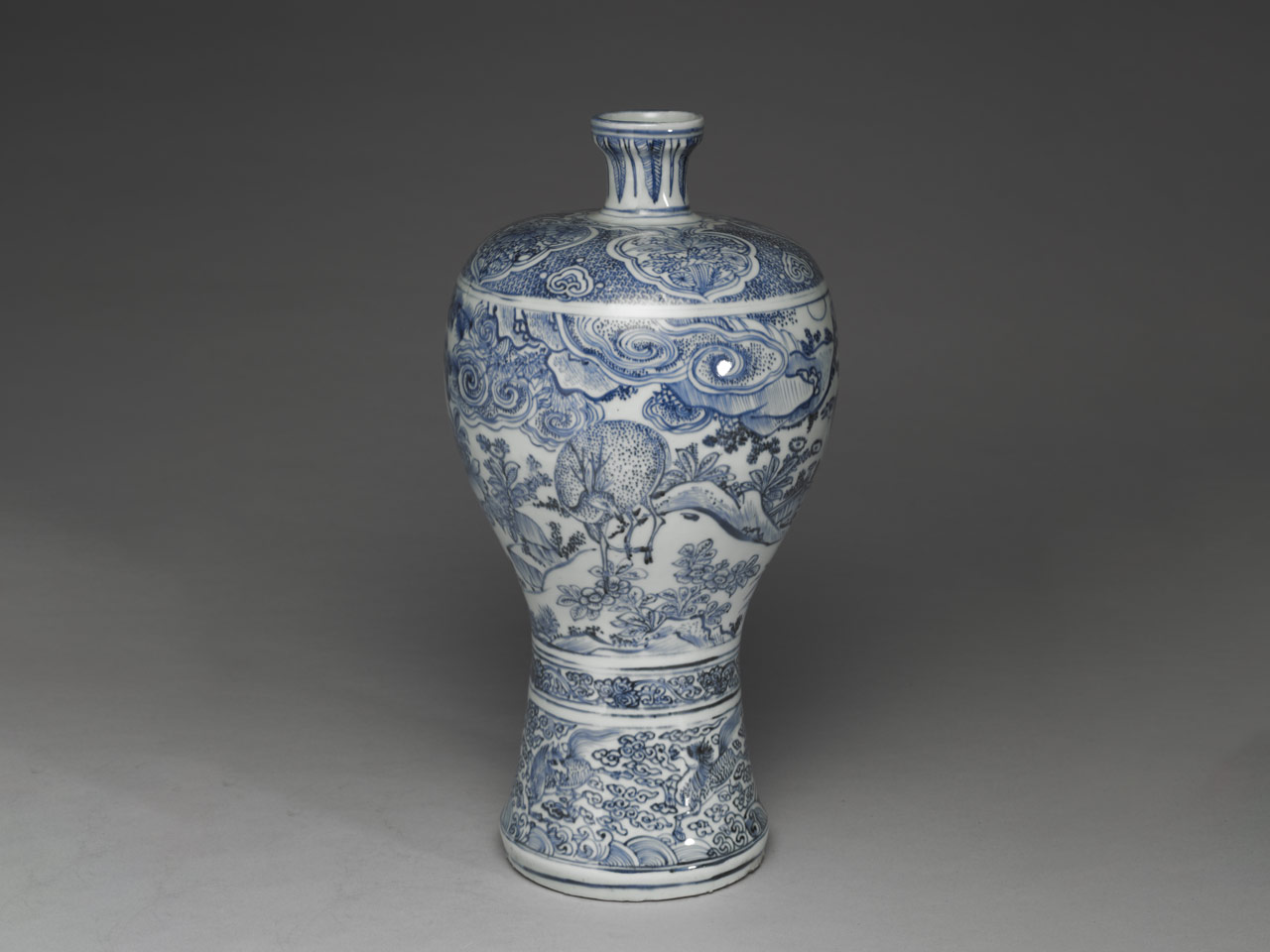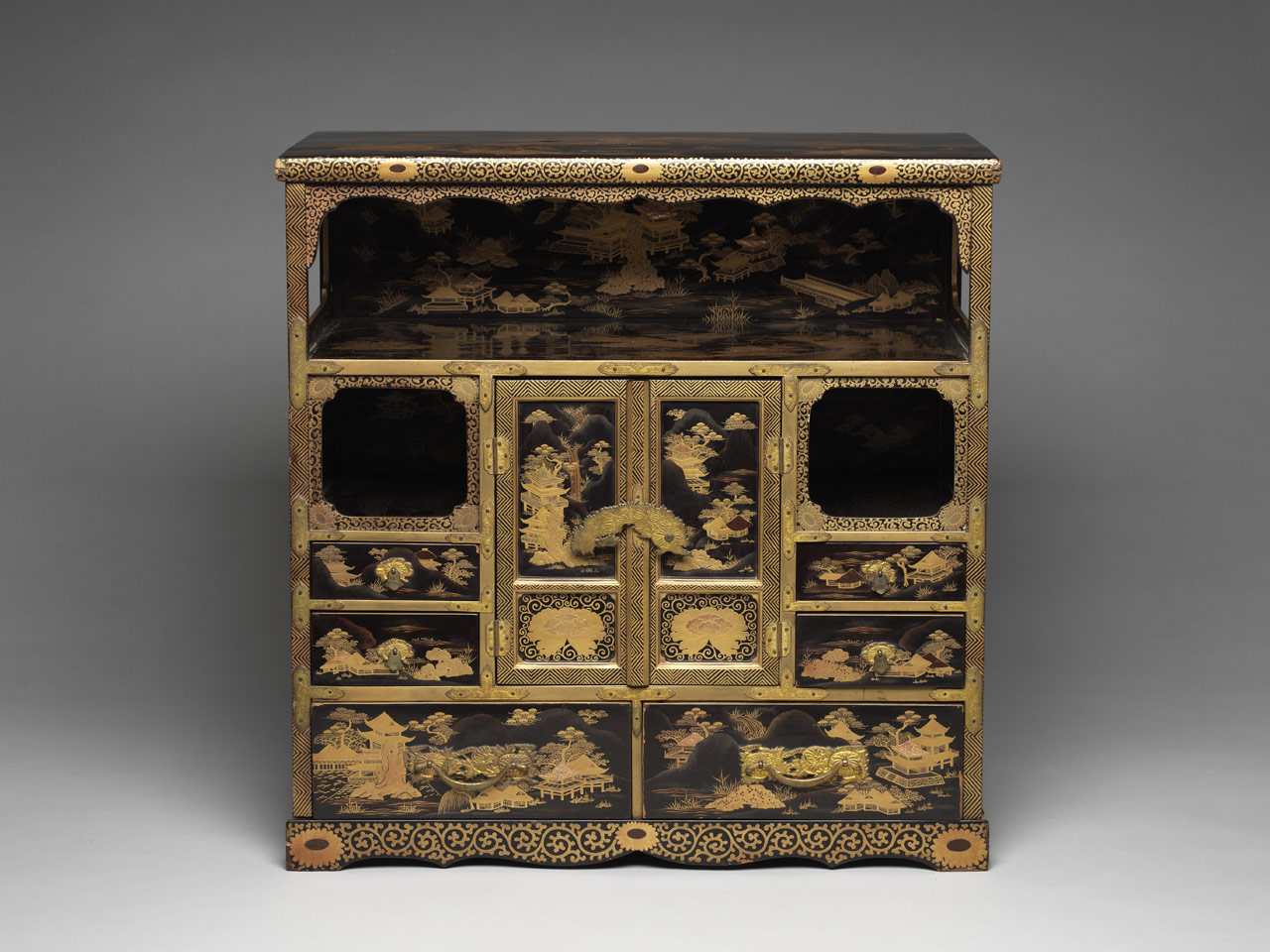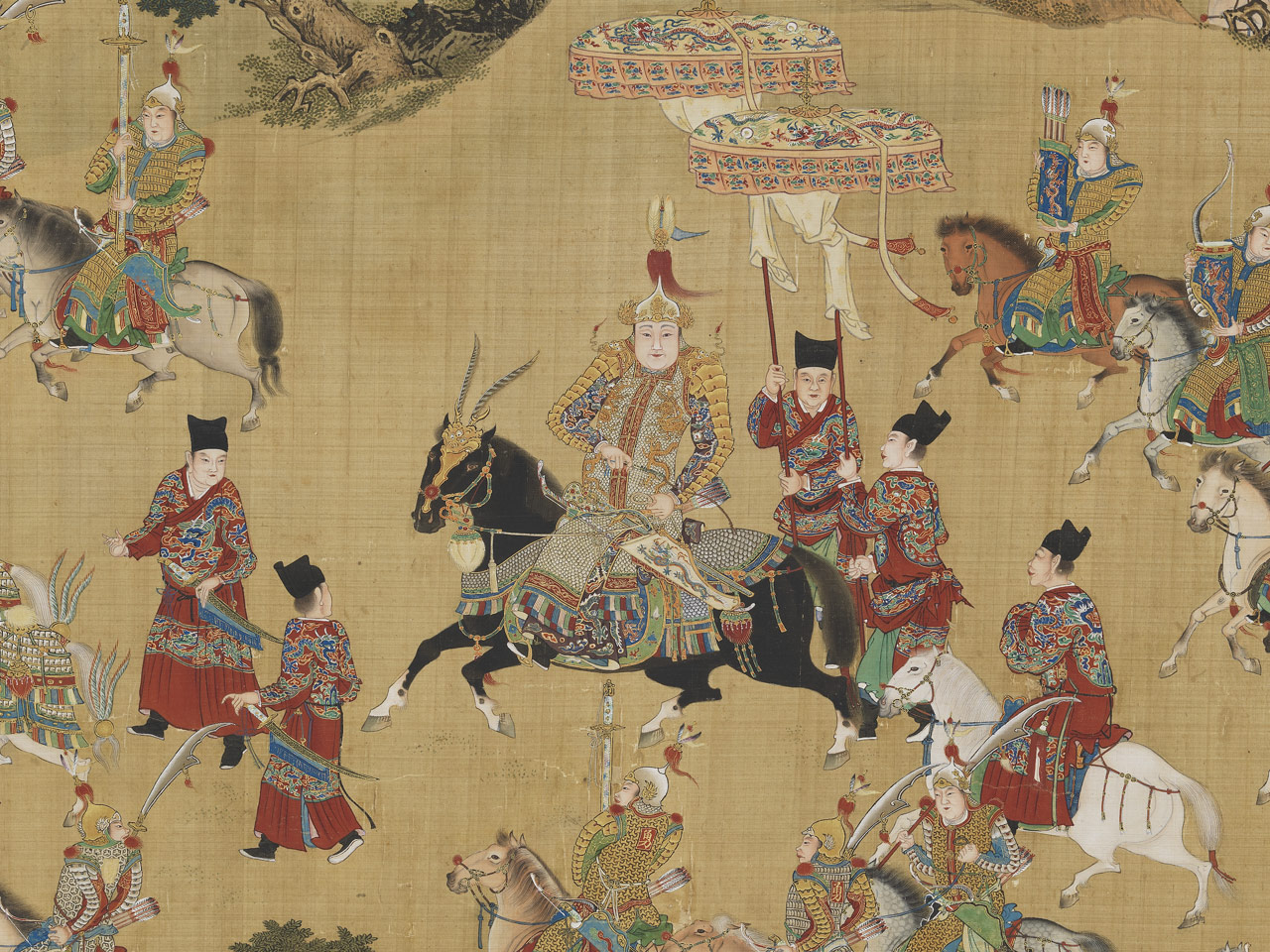What image had China delivered at the time when East met West? In the painting 'Imperial Procession Leaving the Palace', the appearance of emperor was drawn to give ultimate representation of the Eastern monarchical authority. However, the hub of developing the intricate cultures was not located at the capital city. The Suzhou province was situated at the centre of canal network at Jiangnan district. The fact of having advanced water transportations and active economy had made Suzhou to become the metropolitan that was second to none. The highly developed culture of appraisal among local literati, and the accessibility and convenience of materials had both turned Suzhou into the indicator of trends that celebrated a lavish social value. From mansions and gardens, curios and antiques to contemporary products and imported foreign goods had all been evaluated by the standard of Wu district. This phenomenon had resulted in the rise of fakes flooding into market and these all had been recorded in the 'Superfluous Things' (Zhangwuzhi) written by Wen Zhenheng. The paintings after the 17th century had deonstrated diverse characteristics, such as the romantic and misty style of Shen Shichong, and the simplified style of Dong Qichang. The change of dynasty from Ming to Qing caused the falling of prosperity. Consequently, arts became the emotional vent for people who had lost their country, and innovative visual elements were bred along the process. The damages of Jiangnan caused by warfare had also been witnessed by the foreign travelers .
Lacquer cabinet with landscape decoration
- Japan, 18th century
This Japanese lacquer cabinet with landscape decoration from the 18th century was originally collected by the Qing court. The Qing court's selection on assorted objects mainly had referred to publications from the late Ming dynasty. The Superfluous Things (Zhangwuzhi) had included the Japanese lacquer cabinet.
Imperial Procession Leaving the Palace
- Anonymous, Ming dynasty (1368-1644)
This scroll portrays the Wanli Emperor of Ming paying homage on the Tianshou Mountain at the northern side of Beijing in the Spring. The Emperor wears a helmet with phoenix-wing decorations, golden fish scale armour with dragonhead ornaments on the shoulders and arms, which indicate that it's a military suit.


